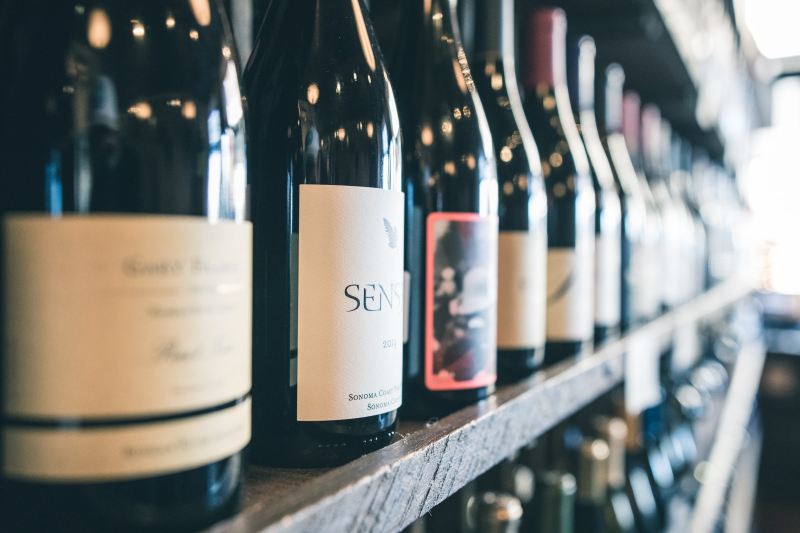
Wine labels can be incredibly confusing. Many of them are in languages we don’t speak, or organized in types we aren’t familiar with. Often, the only loose guideline we have to understanding a wine’s quality is the level of the shelf upon which it sits and the price tag posted underneath. We’re all guilty of judging wines in this way, reaching for one on the second-highest shelf and thinking something along the lines of, “This one’s probably pretty good.” If you have a little more knowledge on the subject of wine, you might know that the word “cru” on a label is a good thing, even if you aren’t sure why. We’re here to explain this word and what it means in terms of a wine’s quality.
The French word “cru” literally means “growth,” and in wine, it references a superior growing site or vineyard. This practice was put into place in France hundreds of years ago, and is still used today. Wines with a “cru” classification are ranked according to their soil, altitude, climate, growing practices, and many other factors that make them superior.
Of course, French wines – while spectacular – are not the only beautiful bottles worthy of a “cru” label. Here’s a general understanding of how the word “cru” is used in wine regions in France, and throughout the world.
French crus
Burgundy
Burgundy is arguably one of the most well-renowned and prestigious wine regions in the world, and with that reputation comes a great deal of possible confusion. After all, the complexities of wine from Burgundy are very real, and something one could spend weeks dissecting. Thankfully, though, Burgundy’s wine classification system is actually quite simple. Vineyards in Burgundy are divided into sections, each owned by individual estates or wineries. These estates are then ranked based on classifications that originated in the 12th century by Cistercian and Benedictine monks in the Côte d’Or. So, the system – while not always entirely flawless – is a traditional and well-respected one.
The Burgundy cru hierarchy ranks from Grand Cru (the “best of the best”) down to Bourgogne (the “lowest-ranked-but don’t-let-anyone-tell-you-these-can’t-still-be-impressive-and-delicious”). The order is as follows:
- Grand Cru
- Premier Cru
- “Village” wines
- Bourgogne
Bordeaux
When it comes to classifying Bordeaux wines, things are a little bit more complicated. As is the case with most French history, the story of wine gets interesting. Bordeaux’s classification system is called the 1855 Grand Cru Classé and was created to rank Bordeaux vineyards for the Paris 1855 World’s Fair. Though some might argue that the system is antiquated, it is still in use today, and greatly influences the price of Bordeaux wines.
The 88 wineries included in the 1855 Grand Cru Classé only account for 5% of the total vineyard area of Bordeaux, but they are highly prized by collectors and connoisseurs. Most of the wines in this classification are highly structured reds, but there are a few sweet white wines that have their own set of titles. They are as follows:
Red wines:
- Premiers Crus (first growths)
- Deuxièmes Crus (second growths)
- Troisièmes Crus (third growths)
- Quatrièmes Crus (fourth growths)
- Cinquièmes Crus (fifth growths)
White wines:
- Premier Cru Supérieur *This title belongs to only one remarkable winery, Château d’Yquem.
- Premiers Crus (first growths)
- Deuxièmes Crus (second growths)
Other French crus
For Alsace wines, the term Grand Cru is used very similarly to the way it’s used in Burgundy, with fifty-one vineyards boasting the Grand Cru label.
In the Beaujolais region of France, cru wines are called Cru Beaujolais and come from only ten prestigious wine villages able to flaunt the title.
As for Champagne, sparkling wines from this popular region are generally divided into two classifications – Grand Cru or Premier Cru, Grand Cru being the superior of the two.
Italian and German crus
Italy and Germany, both also superstars in the wine world, have their own classifications and versions of “cru” rankings for wines. They are as follows:
Germany
- Grosses Gewächs
- Gutswein
- Ortswein
- Erste Lage
- Grosse Lage
Italy
- DOCG – Denominazione di Origine Controllata e Garantita
- DOC – Denominazione di Origine Controllata
- IGT – Indicazione Geografica Tipica
- VdT – Vino da Tavola
Most wine-producing countries have their own version of a cru classification, though the systems put in place by France, Germany, and Italy are the leading examples, and most other classifications very closely resemble these rankings. Of course, there are some countries that have simply gone rogue, and we have to say – we love it. Australia, for example, categorizes its wines with only three rankings – Exceptional, Outstanding, and Excellent.

Which cru is for you?
It’s important to remember that while cru (and cru comparable) wines are very special, special and spectacular wines are not confined to the cru label. Most of these classification systems, or some version of them, have been in place for hundreds of years, and many fantastic modern wineries and vineyards aren’t classified simply because of their age or more modern growing practices. To assume that a wine is not fabulous simply because it does not boast a “cru” label would be a mistake. On the other side of the coin, however, finding a label with the word “cru” is almost a guarantee that it will be beautiful.





